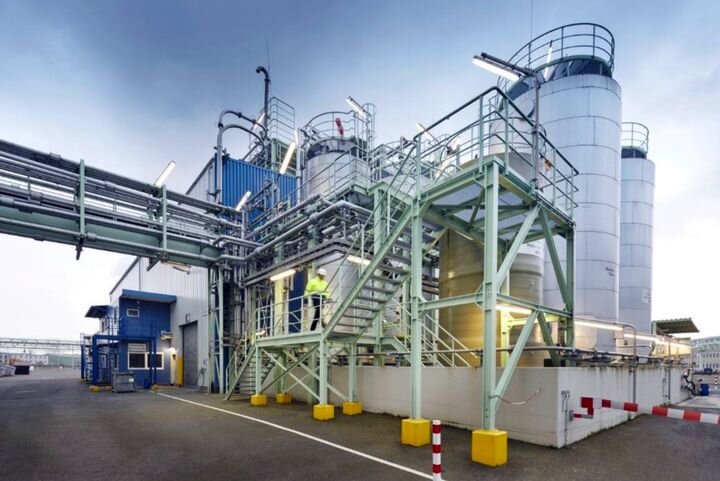![Clariant’s green thermoplastic production plant [Source: Clariant]](https://fabbaloo.com/wp-content/uploads/2020/05/image-asset_img_5eb08b8017fbe.jpg)
We learned that Clariant has zero-emission electrical consumption at one of their German plants.
Switzerland-based Clariant is one of the largest chemical companies in the world, and is one of the notable chemical companies that has recently entered the 3D printing space with the introduction of a number of engineering materials in a variety of formats to accommodate many types of 3D printers. In particular, they have focused on flame-retardant materials that are of specific interest in certain industries.
One of their plants is in Knapsack, Germany, just south of Cologne. They say:
“Clariant will continue to power its BU Additives production facility in Knapsack, Germany, solely with 100% renewable electricity following the site’s successful pilot switch one year ago. This underlines Clariant’s continued efforts of shifting to the use of renewables for its electricity demand, lowering the impact on climate change.”
Clariant Flame Retardant Materials
At this particular plant Clariant produces their flame-retardant Exolit products, some of which will undoubtedly make their way into the company’s 3D printing materials products.
Evidently this large production facility is powered entirely by electricity generated solely from wind and water sources. They say this move possibly eliminated 7300t of CO2 that would otherwise have been emitted into the atmosphere. This would enable Clariant to rightfully claim a degree of “greenness” on their 3D printing products.
I see this as a continuing trend; there are an increasing number of participants in the 3D printing space that are taking a more serious attitude towards the manner in which products are made.
Green Product Awareness
Of course, not everyone uses Clariant products. But this is what happens in a trend. Now that you know there are 3D printing materials produced using green electricity, you may now wonder how that other spool of filament you’re holding was produced.
Was it produced with green electricity? Was it produced with power generated by a coal plant dumping tonnes of CO2 and other pollutants in the air?
You don’t know because the manufacturer has chosen not to label it as such. However, because you’re aware that some companies are indeed using green sources you may now have a little bit of doubt when using other products.
In the future when faced with a choice between products, it’s possible that some may choose the green product over non-green products, if all else is equal.
My expectation is that we’ll be seeing a lot more products of this type as time passes.
Via Clariant

